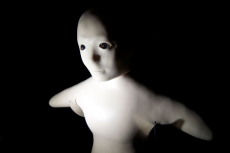
Email: reecejordan98@hotmail.co.uk
Total Article : 168
About Me:18-year-old sixth form student, studying English Literature, History and Government and Politics. My articles will broadly cover topics from the current affairs of politics to reviews of books and albums, as well as adding my own creative pieces, whether it be short fiction or general opinion.

Have you ever had that feeling that something just isn’t right? You might not be able to quite put your finger on it but something is just… wrong. This odd unnerving feeling is what is termed as uncanny.
Many of history’s great minds have mused over the feeling of the uncanny, most notably the psychoanalyst, Sigmund Freud. Freud’s essay, aptly titled The Uncanny, is one of the most comprehensive explorations of the disconcerting feeling of the uncanny.
Andrew Bennett and Nicholas Royle in their book An Introduction to Literature, Criticism and Theory produce a list of what makes something uncanny. This is what they constitute as uncanny.
1) Repetition – the two examples that Bennett and Royle give for this are the experience of déjá vu and the idea of a double or doppelganger.
2) Odd coincidences / acts of ‘fate’ – the notion that something is almost too good to be true; is that really a £50 note on the floor after you have just received a parking ticket?
3) Animism – This is where “inanimate or lifeless” things are given attributes of life or spirit. So, for example, the trees may feel as if they are whispering or, worse still, conspiring when you walk through a forest alone.
4) Anthropomorphism – This is similar to animism but it instead relates to “human form and shape”. Bennett and Royle give the example of legs of a chair (though I wouldn’t necessarily say that this is particularly uncanny). Their later example of children’s dolls seems more appropriate. What is interesting to note, however, in the case of children’s toys, is that this anthropomorphism appears only uncanny to adults. Children seem perfectly fine attributing life onto something inanimate.
5) Automatism – This is, Bennett and Royle describe, is “what is human is perceived as merely mechanical”. The examples they give are sleepwalking, epileptic fits, trance-states and madness. This might seem uncanny to us as it shows a complete absence of control, but more importantly, that someone seems under the control of something else, something almost apparitional. Robots and other machines can also be perceived to be uncanny.
6) A sense of radical uncertainty about sexual identity – Is this uncanny? Perhaps this one is one of the most interesting examples in that it is dependent on age, and therefore socially constructed. For me I don’t find this an attribute of the uncanny, but, rather, something different to me that I can accept. I imagine this is what the majority of people in my generation feel like. I have noted, actually, that the older generations seem ‘creeped out’ at the thought of gender not being something fixed.
7) Fear of being buried alive – This, Bennett and Royle state, “is related more broadly to images or experiences of claustrophobia, of being unexpectedly and unpleasantly stuck”. Makes pretty decent sense to me.
Image Credits: CNET

0 Comment:
Be the first one to comment on this article.